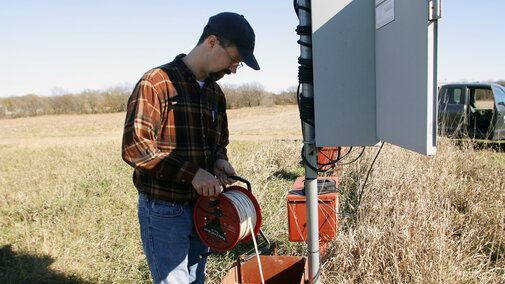Groundwater levels in much of Nebraska continue to decline after several years of prolonged drought, according to the most recent statewide groundwater level report from the Conservation and Survey Division in the University of Nebraska–Lincoln’s School of Natural Resources.
Of the 4,822 wells measured statewide, 85% exhibited declines from spring 2022 to spring 2023.
Groundwater level changes in Nebraska are impacted by withdrawals, primarily for irrigation, and the amount of recharge from precipitation. The hotter and drier a growing season is, the less water is available for aquifer recharge and the more water is required for supplemental irrigation, thus, groundwater levels decline. Conversely, in years of above-average precipitation, more rainfall leads to greater recharge, less pumping is required for irrigation, and groundwater levels rise.
From January 2022 to January 2023, precipitation recorded at all 189 reporting stations in Nebraska was less than the 30-year normal. Below-average precipitation and an increased need for irrigation led to groundwater level declines of more than 20 feet at some locations. Moreover, because drought conditions have persisted across much of the state since mid-2020, groundwater levels have declined significantly in the last three years. On average, water depth in Nebraska wells has declined by 3.15 feet since spring 2020. Early reports for 2024 suggest this trend will continue in at least the eastern third of the state.

